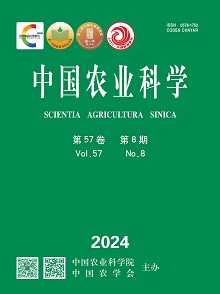|
|
Study on Value Loss Evaluation Model and Compensation Mechanism of Cultivated Land Conversion
REN Ping, WU Tao, ZHOU Jie-Ming
Scientia Agricultura Sinica
2014, 47 (4):
786-795.
DOI: 10.3864/j.issn.0578-1752.2014.04.019
【Objective】The most serious problem associated with the cultivated land protection project in China is the long-term neglect of ecological value and social value existing within cultivated land. The value loss along with the cultivated land conversion is much beyond the economic value estimated with traditional perspective. Based on such understanding, this research is considering the deficiency of theory for understanding cultivated land conversion, and the insufficiency of comprehensive research on the scientific questions associated with cultivated land protection/conversion, such as the value constitute, the system, and the research method, are the core problems when studying cultivated land loss and conversion. Such questions are the basic theoretic issues that must be understood. To realize quantitative evaluation and simulation of value loss happening with cultivated land conversion, this paper established a value evaluation method and model for cultivated land, so as to provide a theoretical and practical reference for cultivated land protection and compensation policy.【Method】Based on the value classification method for cultivated land resources, income capitalization approach, equivalent replacement method, and market value method were applied to establishing a comprehensive evaluation model incorporating resource economic value, social value, and ecological service value. The economic value of cultivated land resource is based on through income capitalization approach, by which a serious of yield variance weights indices for different crops are modified. The social value is estimated by equivalent replacement method, in which the basic security value is replaced by the correction parameter of urban endowment insurance, the wage level for farmers’ employment is replaced by the productivity effect of agricultural labor, and the social stability value is replaced by the regional food supply-and-demand difference parameter. Finally, based on the amendment of unit ecological equivalence factor, the economical service value of cultivated land resource is calculated by market value method, through which the correlation between the economic value of ecological service equivalence factor and the food average yield per unit area is considered. 【Result】 The evaluation model objectively restored the monetization value for cultivated land resources. The entire approach is scientific and also feasible. Besides, the model is regional-cross for the evaluation and simulation functions can be applied to different areas-it possesses favorable universality and applicability. The evaluation results by such model also showed that for Sichuan province the cultivated land protection value in 2010 was 1 million and 22.85 thousand yuan per hm2 , of which the economic value, social value and ecological service value account for 5.74%, 64.17% and 30.09% respectively. (3) Taking 2010 as the basic analysis year, the total cultivated land protection value for the entire Sichuan province in 2010 was 825 trillion and 55.2 billion yuan, and the value loss happening with the non-agriculture conversion was 43.612 billion yuan, which accounts for 2.5% of Sichuan’s GDP.【Conclusion】According to the response mode at micro level for different interest agents associated with cultivated land conversion, the function by the central government should not exclude from the compensation for value loss caused by cultivated land conversion (protection). The central government should accept the responsibility of ecological service value and social stability value for cultivated land protection, based on which a security fund will be created to support the cultivated land protectors. Meanwhile the local governments and enterprises should take the responsibility of value compensation for cultivated land value loss. There is a regional difference in cultivated land resource value. So, it is an important technical issue for construct a value assessment and amendment system for cultivated land resource in future work. Such evaluation methods and the results derived from such research could be applied to practical evaluation of value loss for cultivated land conversion. The research results could supply a theoretical foundation to create a security fund as the central government’s responsibility. Such results also will offer technical supports for framing a concrete compensation standard. Furthermore, this research will provide a new perspective for constituting the compensation mechanism of cultivated land conversion, and promote the upgrade of cultivated land protection from the traditional mode and the establishment of a new compensation mechanism for cultivated land protection.
Reference |
Related Articles |
Metrics
|
|











